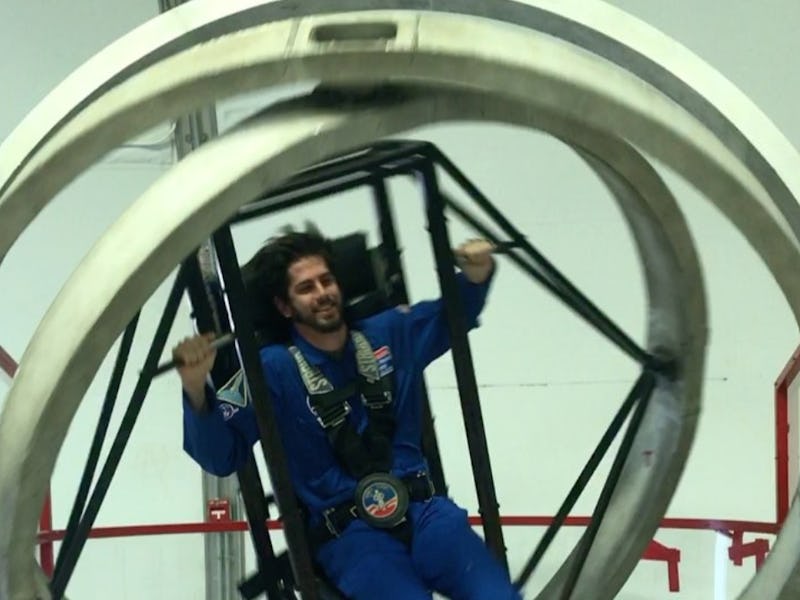
If you ever saw commercials for Space Camp as kid, you probably remember seeing someone get strapped into a chair and spun around, backward, forward, and upside down, in a series of ominous rotating metal rings. It’s called a multi-axis trainer, and it’s easily Space Camp’s most flashy attraction — in fact, it’s based on a real-life astronaut training simulator. Though it might not look like it, the simulator isn’t a guaranteed ticket to vomit town — trust me, I know.
The official Space Camp’s campus in Huntsville, Alabama houses three of these trainers, which are toned-down versions of the gimbal Rig mercury astronaut trainer that NASA used in 1960. Recently, I got to go for a spin in one as part of a press junket for two upcoming National Geographic documentaries. The experience is meant to simulate what an uncontrolled spin in microgravity would feel like, and while it’s disorienting, it’s not sickening.
“It simulates a tumble spin but you don’t feel sick because your stomach is the center of gravity on that machine,” Space Camp crew trainer Katlin Kanable explained to Inverse. “So, you’ll move all around, you’ll flip upside down, you’ll turn around, but through all of that, your stomach stays in place in the center of that chair.”
“And then you shouldn’t get any type of dizzy feeling because you’re never going in the same direction long enough for your inner ear fluid to shift,” crew trainer Camille Woods added.
I’m prone to getting carsick, but I felt mostly fine when I got down from the rig. The trainers said the only way to really get sick on the trainer is to keep opening and closing your eyes because, in that scenario, your brain isn’t able to keep up with your spinning, staccato vision. I kept my eyes open, so all I felt was a rush of adrenaline and no nausea.
Even though the multi-axis trainer is a marquee attraction at Space Camp, the real trainer it’s based on has a surprisingly small part in actual NASA history. The multiple-axis space test inertia facility, or “gimbal rig,” spun all seven Mercury astronauts in 1960 in the hopes that it would prepare them in the even their spacecraft got into an uncontrolled spin. The gimbal rig was a series of cages, rather than rings, and the astronauts were able to control simulated jets in an attempt to correct the spin and regain control.
The gimbal rig.
None of the Mercury missions encountered a multi-axis spin like the gimbal rig would’ve prepared them for, and the training stopped being a part of NASA’s astronaut preparation. However, six years later, Neil Armstrong found himself in exactly this scenario when a thruster malfunction on the Gemini VIII mission caused the spacecraft to spin out of control. Armstrong, heroically, was able to right Gemini, though the rest of the mission had to be aborted as getting out of the spin had eaten up almost three-quarters of the ship’s reentry maneuvering fuel.
Based on my experience in the gimbal rig’s kid cousin, there is no way in hell I would’ve been able to do what Armstrong did, regardless if I was vomiting or not.